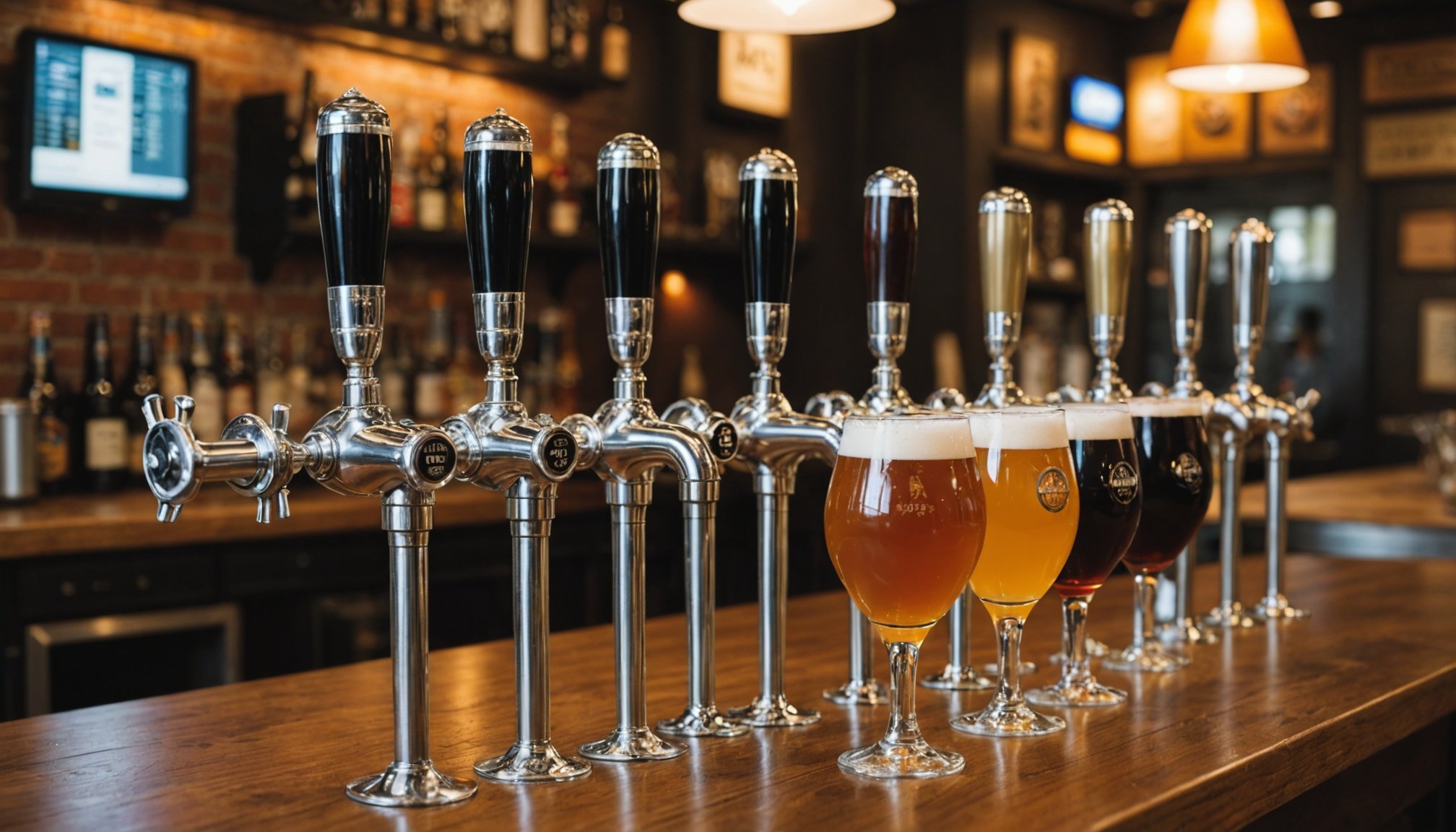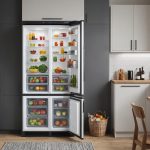Crafting the perfect beer tap rotation can transform your bar’s experience. A thoughtful selection of craft brews keeps customers excited and engaged, while showcasing your expertise. Strategies such as seasonal offerings, customer feedback, and creative pairings enhance your lineup. This guide provides actionable insights for optimizing your taps, ensuring each pour resonates with your patrons. Elevate your bar’s craft beer game and keep them coming back for more.
Understanding Beer Tap Rotation
Understanding the concept of beer tap rotation is crucial for maintaining freshness and variety in any establishment serving craft beer. Regularly rotating beer taps ensures that the selection remains exciting and up-to-date, catering to the evolving tastes of beer enthusiasts. This practice not only enhances the freshness of the beer served but also keeps the menu dynamic.
Also read : Essential Tips for Effectively Cleaning Draft Beer Lines in Your Craft Brewery
Rotating beer taps significantly influences customer satisfaction by offering a diverse range of flavors and styles. It encourages patrons to explore new options, thus increasing customer retention and attraction. Establishments that frequently update their beer offerings are more likely to draw in curious customers eager to try the latest brews.
Benefits of Tap Rotation
- Freshness: Keeps beer from going stale
- Variety: Offers a wide range of flavors
- Customer Engagement: Attracts new and returning patrons
Recent trends in craft beer consumption highlight the growing demand for unique and seasonal offerings. As consumers become more adventurous, they seek out establishments that provide an ever-changing beer list. By embracing beer tap rotation, businesses can align with these trends, ensuring they meet customer expectations and remain competitive in the vibrant craft beer market.
Also to discover : Discover the Hottest Innovations in Gourmet Burger Presentation Trends
Strategies for Effective Tap Rotation
Implementing robust tap rotation strategies is essential for maintaining an engaging beer selection. By effectively managing inventory and incorporating seasonal selections, establishments can enhance their offerings.
Seasonal Beer Selections
Choosing the right seasonal selections involves understanding the preferences of your clientele and the seasonal trends in beer consumption. A well-curated seasonal menu can attract new customers and keep regulars coming back for more. Consider the following best practices:
- Research Trends: Stay informed about popular seasonal brews.
- Inventory Management: Ensure timely rotation to avoid wastage.
- Customer Feedback: Use surveys to gauge interest in specific seasonal beers.
Utilizing Local Breweries
Partnering with local breweries can be a game-changer. It not only supports the community but also brings unique offerings to your tap list. Local collaborations often result in exclusive brews that can’t be found elsewhere, adding a special touch to your menu.
Tracking Customer Preferences
Understanding what your customers enjoy is crucial. Employ tools like point-of-sale data analysis and social media polls to gather feedback. This data-driven approach helps tailor your tap rotation strategies to match customer preferences, ensuring that your beer selection remains relevant and appealing.
By focusing on these strategies, businesses can create a dynamic and satisfying beer experience.
Optimizing Beer Menu for Sales
Optimizing your beer menu is essential for boosting sales and ensuring customer satisfaction. Effective pricing strategies can significantly impact your profit margins. Consider using tiered pricing based on beer type or alcohol content. This approach not only maximizes profit but also aligns with customer expectations.
“A well-priced beer menu can be a game-changer for any establishment.”
Pricing Strategies
Pricing should reflect both the quality and exclusivity of the craft beers offered. Implementing strategies such as happy hour discounts or bundle deals can attract more patrons. These promotional events create a buzz and encourage customers to try new offerings.
Role of Promotional Events
Promotional events are crucial in driving beer sales. They provide an opportunity to showcase new or seasonal beers. Hosting tasting nights or brewery collaborations can increase foot traffic and enhance customer engagement.
Importance of Menu Design
The design of your beer menu plays a vital role in sales optimization. A clear, visually appealing menu with detailed descriptions can guide customers in making informed decisions. Highlighting unique flavors or brewing techniques can entice customers to explore different options.
By focusing on these elements, establishments can effectively optimize their beer menu for sales.
Leveraging Data for Tap Selection
In the evolving craft beer market, leveraging data-driven decisions is crucial to optimize tap selection. Establishments can enhance their offerings by analyzing sales data and understanding customer preferences.
Analyzing Sales Data
Sales analysis is a powerful tool for identifying the performance of individual taps. By reviewing which beers sell best, businesses can make informed choices about which brews to keep or rotate. This approach helps maintain a fresh and appealing menu. A well-analyzed sales record also highlights underperforming selections, allowing for timely adjustments.
Customer Purchase Trends
Understanding customer analytics is vital for aligning tap selections with consumer demands. By tracking purchase trends, businesses can identify popular styles and flavors, adjusting their menu to match these preferences. Seasonal patterns often emerge, indicating when to introduce specific brews.
- Popular Styles: IPAs, Stouts, Lagers
- Seasonal Trends: Summer ales, Winter warmers
Tools for Data Collection
Effective data management relies on the right tools. Point-of-sale systems and customer feedback surveys are essential for gathering insights. These tools provide comprehensive data, enabling precise tap rotation strategies. Employing robust analytics software can streamline this process, offering actionable insights to drive sales and enhance customer satisfaction.
Case Studies and Expert Insights
Exploring real-world examples provides valuable lessons for those seeking to master tap rotation. These bar case studies highlight successful strategies and common pitfalls.
Success Stories
Several bars have excelled by implementing innovative tap rotation practices. For instance, a renowned bar in New York City doubled its customer base by introducing a rotating selection of local craft beers. This approach kept the menu fresh and aligned with consumer preferences, fostering a loyal clientele.
Expert Recommendations
Industry experts emphasize the importance of understanding market trends and customer preferences. According to a leading beer consultant, "Regularly updating your taps not only boosts sales but also enhances the overall customer experience." This underscores the need for data-driven decisions in tap rotation.
Lessons Learned
Common mistakes in tap rotation include neglecting customer feedback and failing to diversify the beer selection. Successful bars prioritize these elements, ensuring a balance between popular staples and experimental brews. A well-structured rotation strategy can mitigate risks and maximize profits.
Key Practices:
- Engage with local breweries
- Utilize customer feedback
- Implement seasonal rotations
By focusing on these industry best practices, bars can enhance their offerings and remain competitive in the dynamic craft beer market.











